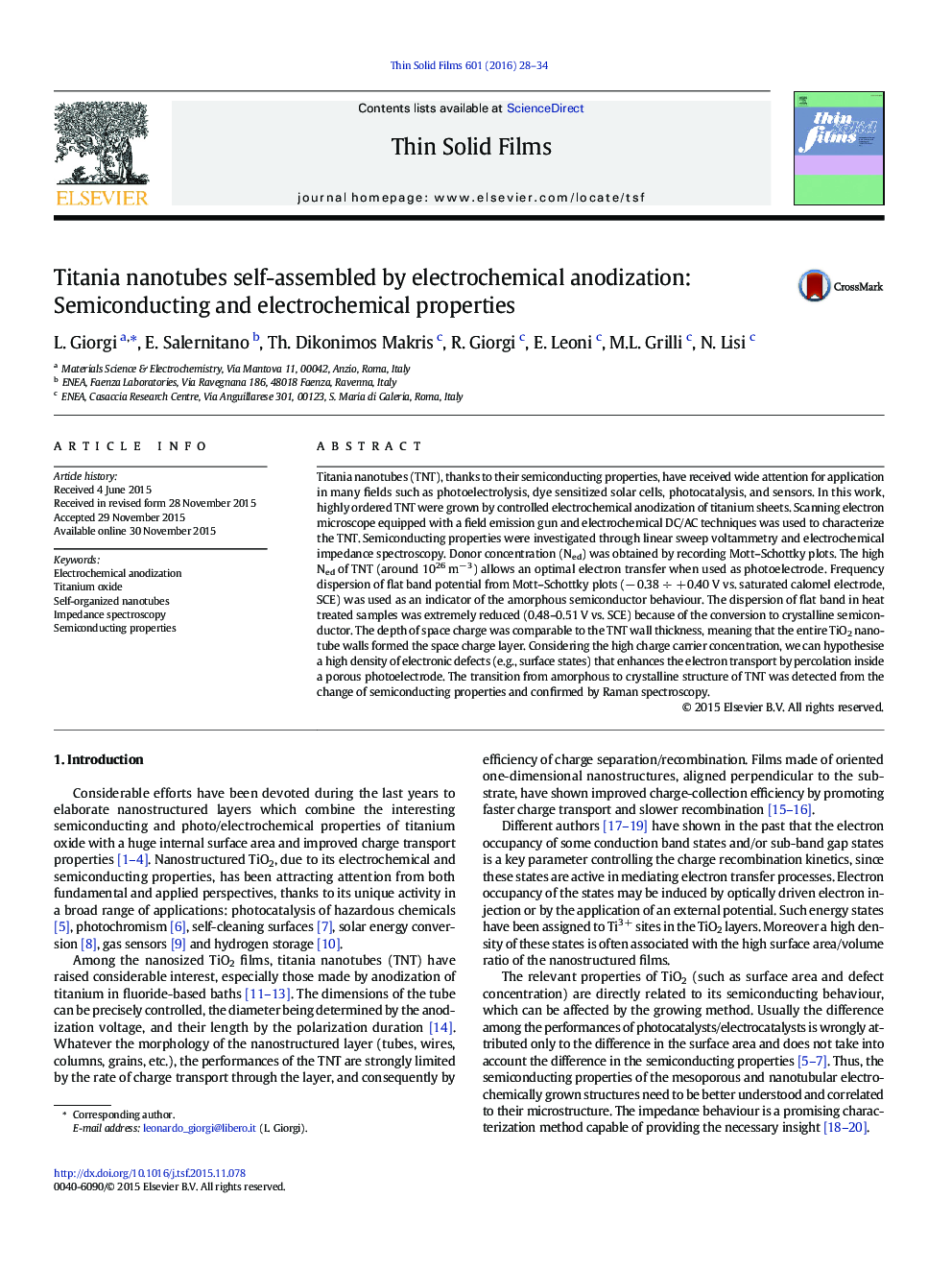| کد مقاله | کد نشریه | سال انتشار | مقاله انگلیسی | نسخه تمام متن |
|---|---|---|---|---|
| 1664088 | 1518008 | 2016 | 7 صفحه PDF | دانلود رایگان |
• Highly ordered self-assembled TiO2 nanotubes were synthesized by electrochemical anodization.
• The electrochemical and semiconducting properties were studied.
• An electrical model was developed for titania nanotubes/electrolyte interface.
• Thermal treatment changed electronic properties of TiO2 nanotubes.
• Transition from amorphous to crystalline structure determined by electrochemical tests
Titania nanotubes (TNT), thanks to their semiconducting properties, have received wide attention for application in many fields such as photoelectrolysis, dye sensitized solar cells, photocatalysis, and sensors. In this work, highly ordered TNT were grown by controlled electrochemical anodization of titanium sheets. Scanning electron microscope equipped with a field emission gun and electrochemical DC/AC techniques was used to characterize the TNT. Semiconducting properties were investigated through linear sweep voltammetry and electrochemical impedance spectroscopy. Donor concentration (Ned) was obtained by recording Mott–Schottky plots. The high Ned of TNT (around 1026 m− 3) allows an optimal electron transfer when used as photoelectrode. Frequency dispersion of flat band potential from Mott–Schottky plots (− 0.38 ÷ + 0.40 V vs. saturated calomel electrode, SCE) was used as an indicator of the amorphous semiconductor behaviour. The dispersion of flat band in heat treated samples was extremely reduced (0.48–0.51 V vs. SCE) because of the conversion to crystalline semiconductor. The depth of space charge was comparable to the TNT wall thickness, meaning that the entire TiO2 nanotube walls formed the space charge layer. Considering the high charge carrier concentration, we can hypothesise a high density of electronic defects (e.g., surface states) that enhances the electron transport by percolation inside a porous photoelectrode. The transition from amorphous to crystalline structure of TNT was detected from the change of semiconducting properties and confirmed by Raman spectroscopy.
Journal: Thin Solid Films - Volume 601, 29 February 2016, Pages 28–34
